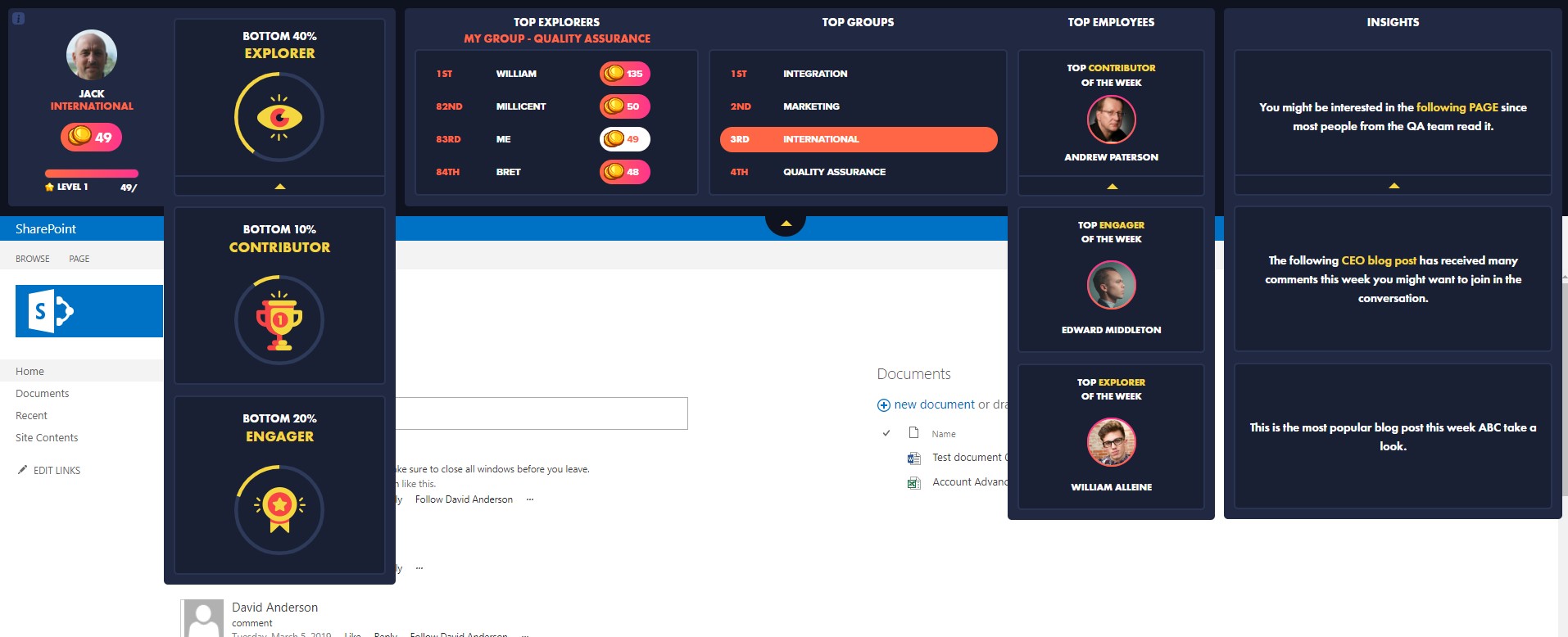Is there a way to improve the productivity of employees? Most employers struggle with this question over and over again. Since employees represent the backbone of any organization, companies must always strive to ensure they can enable them to become more successful in their roles.
During the past few years, we have witnessed a significant change in how companies operate and manage their employees. The talent market has been disrupted by remote work, which ushered in an era of great resignations to record levels of engagement.
However, what can be done to ensure high levels of employee productivity despite these changes? The purpose of this blog is to provide a comprehensive list of the best practices for employee productivity that any organization can adopt. So be sure to read till the end if you are looking for ways to improve your employee’s productivity.
7 Ways to Increase Employee Growth and Productivity in an Organization
Here are 7 important tips you can follow as a CEO or manager to increase your employee productivity in your company and retain them as long as you want to.
1. Enhance Transparency and Alignment Within the Organization
Poor workplace performance is often the result of a lack of transparency and a lack of team alignment. Without a clear understanding of your company’s core values, mission, and vision, your employees cannot work together toward the same objectives. Despite this, many organizations, especially enterprises, have a significant amount of room for improvement.
IBM’s research indicates that 72% of employees are unaware of their organization’s strategy, and 58% wish they had a better understanding of the company’s plans. Develop an internal communications strategy that is more resource-intensive. Implement an internal newsletter with your branding, logos, and everything that shows your organization’s values, goals, and plans. You can also develop a podcast for the same purpose.
Invite your CEO and other senior leaders to speak at a webinar or podcast organized for your employees, as well as always allow your employees to participate.
2. Be Clear About Your Expectations and Goals
Setting clearly defined objectives and goals for your employees is crucial to improving their productivity. A company’s vision and mission must be aligned with individual KPIs once it has been defined.
In a recent study, 95% of employees did not fully understand the goals of their organization or what was expected of them to accomplish these goals.
Having made sure your employees are familiar with the overall goals of your organization, empower them to develop their KPIs. By doing so, you will be able to encourage innovation at work and awaken the creative spirit of your employees. Although this process may require several iterations in the beginning, your employees will soon be able to make decisions independently.
3. Provide Flexibility in Work Scheduling
Every individual has a prime time for productivity during the day. There may be some people who are not able to adhere to a strict 9-to-5 schedule or work hard from the early hours of the morning.
Rather than working 8 hours continuously per day, your employees should work two smaller blocks of time. Consider allowing them to clock in from 7 a.m. to 1 p.m., enjoy a long lunch, and then complete their workday from 3 p.m. to 5 p.m.
After the long, fulfilling 2-hour break, the employees will feel more productive and efficient, and they will avoid the dreaded afternoon slump that employees often experience before closing.
4. Encourage the Collaboration of Teams
Higher innovation levels increase productivity and growth for businesses. Having digital and interactive workplaces plays a critical role in enabling organizations to fully collaborate with their workforce.
Having a mobile application with a management system within your company would be another option for sharing information with social media feeds. A workforce management system allows you to make changes in your company and collect meaningful employee feedback, ultimately improving the efficiency of your workforce.
There are quite a few tools that can be leveraged for seamless collaboration. Technology has made it a lot easier for professionals with flexible work schedules to update on deliverables and meet virtually. You can find quite a few innovative tools for communication and collaboration that drive employee engagement.

5. Develop a Recognition Program
The best way to increase your employees’ productivity and efficiency is to demonstrate appreciation for their efforts. The problem is that employees tend to forget to express gratitude without a formal recognition program.
Establish an internal channel where employees can express their appreciation to one another. Make sure the reasons for recognition are aligned with the company’s ultimate business objectives. Make your company’s policies and procedures as transparent as possible to enable employees to understand what is expected of them.
Many employees are indeed motivated by financial rewards; however, you can make a recognition program that is not based on money as meaningful and relevant as well. If you would like to reward your employees, you may offer a chat with the CEO, a day off, or the opportunity to donate money to their favorite charities.
6. Improve Employee Training
Employees’ knowledge and performance can be improved by developing their skills and knowledge. During a survey conducted by the Noble International Journal of Business and Management Research, employees reported believing the following about job training:
- Enhances skills,
- Enhances knowledge and abilities
- Contributes to job satisfaction.
Training should be conducted on a hands-on basis. During this type of training, the employees are allowed to try certain tasks as they learn about them to determine whether they are effective. It is well established that hands-on training is extremely effective. However, few studies demonstrate the importance of this form of training.
According to an active learning study, students who did not engage in hands-on learning had a 1.5 times higher likelihood of failing a course.
Give employees the freedom to develop at their own pace. Studies have shown that self-paced learning has a significant impact on memory performance. If complex topics are rushed through, employees will not be able to test their newly acquired skills or retain the new knowledge they have gained. Therefore, your employees must have time to process all that they learned and apply it in practice.
7. Putting an End to Micromanagement
Many leaders have the misconception that micromanagement is the key to success. The belief that micromanagement and assigning tasks to employees are the main factors responsible for increasing productivity is incorrect. In reality, overloading employees with unnecessary control can have the exact opposite effect. An organization cannot empower its employees unless it trusts them and allows them complete autonomy over their daily tasks.
For individuals to be happy and productive, they must have some latitude. Your team will grow well with independence and flexibility to assist your clients or to resolve an issue to a satisfactory conclusion. To ensure that your employees achieve a specific outcome, you will need to provide them with guidelines. It is also important to communicate your expectations to your employees.
If your employees are more focused on their goal than the means of getting there, you’ll have less to worry about and micromanage.
Conclusion about Ways to Enhance Employee Productivity and Growth
An organization’s workforce is its lifeblood. Thus, increasing employee productivity contributes to the bottom line of an organization, ensuring its long-term competitiveness and ability to succeed.
Improved employee productivity can be achieved in several ways, so identify the strategies that are best suited to your organization and your team to reap its benefits.














 Follow @cardiolog
Follow @cardiolog 